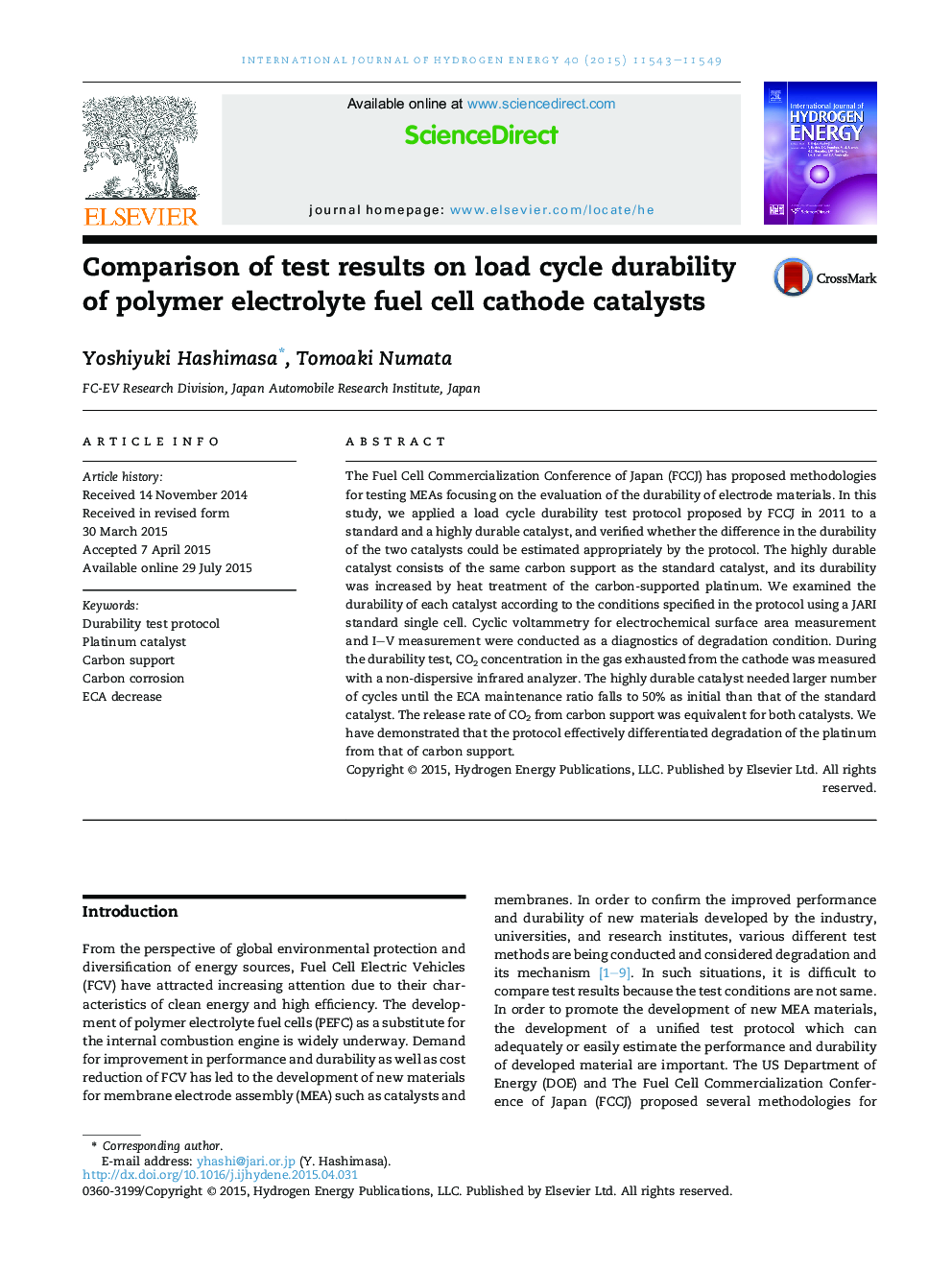| Article ID | Journal | Published Year | Pages | File Type |
|---|---|---|---|---|
| 7714125 | International Journal of Hydrogen Energy | 2015 | 7 Pages |
Abstract
The Fuel Cell Commercialization Conference of Japan (FCCJ) has proposed methodologies for testing MEAs focusing on the evaluation of the durability of electrode materials. In this study, we applied a load cycle durability test protocol proposed by FCCJ in 2011 to a standard and a highly durable catalyst, and verified whether the difference in the durability of the two catalysts could be estimated appropriately by the protocol. The highly durable catalyst consists of the same carbon support as the standard catalyst, and its durability was increased by heat treatment of the carbon-supported platinum. We examined the durability of each catalyst according to the conditions specified in the protocol using a JARI standard single cell. Cyclic voltammetry for electrochemical surface area measurement and I-V measurement were conducted as a diagnostics of degradation condition. During the durability test, CO2 concentration in the gas exhausted from the cathode was measured with a non-dispersive infrared analyzer. The highly durable catalyst needed larger number of cycles until the ECA maintenance ratio falls to 50% as initial than that of the standard catalyst. The release rate of CO2 from carbon support was equivalent for both catalysts. We have demonstrated that the protocol effectively differentiated degradation of the platinum from that of carbon support.
Related Topics
Physical Sciences and Engineering
Chemistry
Electrochemistry
Authors
Yoshiyuki Hashimasa, Tomoaki Numata,
